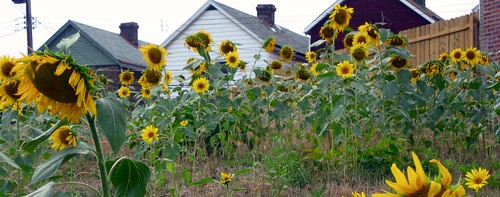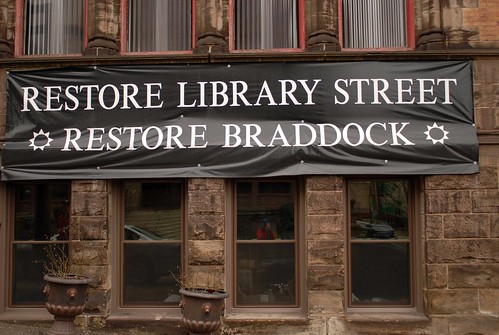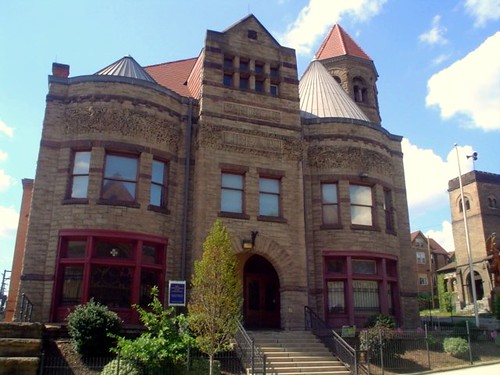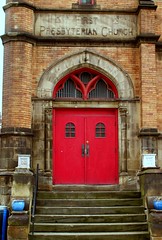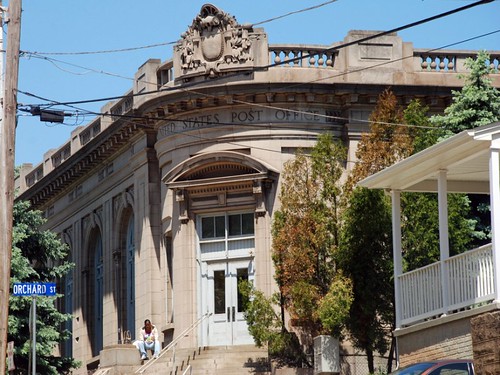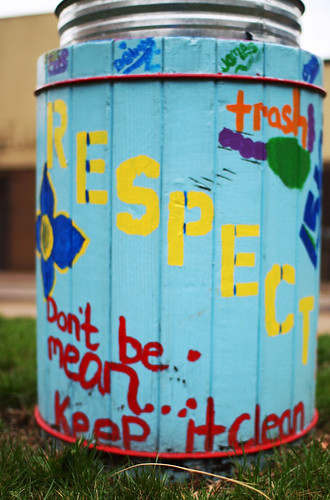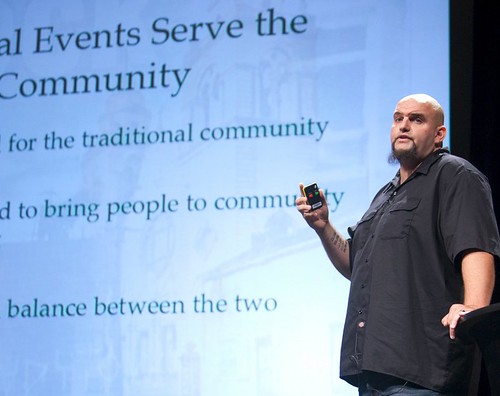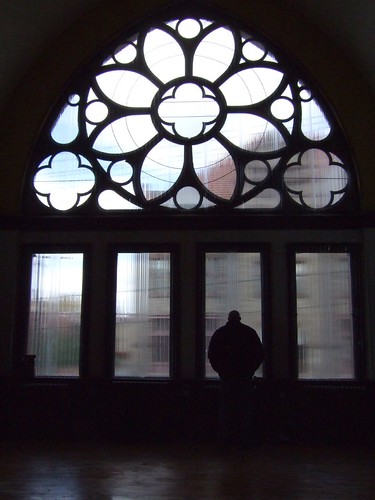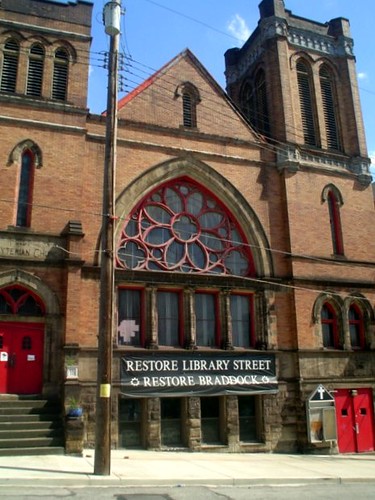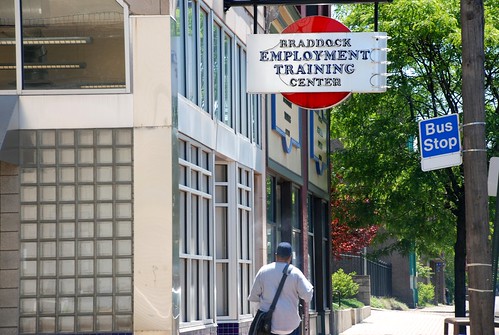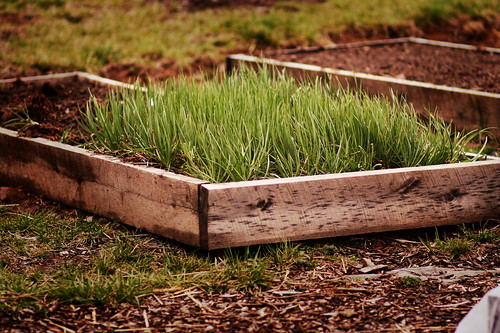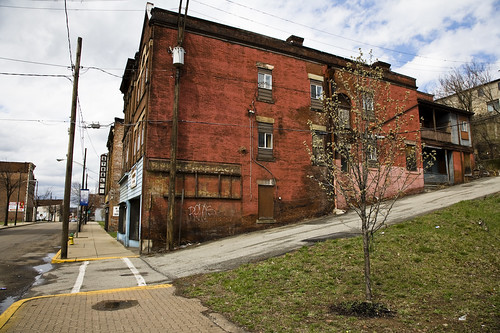Images of hope from a town where 'reinvention is the only option' (Braddock, Part 2)

Posted October 14, 2010 at 1:34PM
Today's post concludes the two-part story of Braddock, Pennsylvania, a once-prosperous steel town whose population has declined by nearly ninety percent and much of whose community fabric has been under serious decay for decades. Candidly asserting that 'reinvention is the only option,' Braddock's edgy web site asks:
"Can a town that’s lost 90% of its population, homes and businesses ever come back? Could Braddock’s remaining assets be leveraged by new ideas, energy and individuals to spark a cultural and economic revitalization? If we concede that Braddock will never again be what it was, can we begin to imagine what it will be next?"
Braddock's "remaining assets" include some fine period architecture, starting with the Carnegie Free Library, the first of more than a thousand libraries built across the country by steel magnate Andrew Carnegie; the fine First Presbyterian Church, now being restored as a community center; and the borough's historic post office.
I am able to show you these evocative images because of the generosity of some immensely talented photographers who have graciously licensed their work for noncommercial use: Ryan Thompson, Ken Schultz, Kristen Taylor, Jennifer Brandel, rian_bean, Paige Shoemaker, Kris Krug, Mark Knobil, Cole Young, plan12/Sean, and Sean Marshall. As always, move your cursor over the images for specifics and click on the images to be taken to the photographers' home sites.
There can be little doubt that Braddock's remaining residents exhibit pride in, and hope for, their community.
Some of that hope rests on the considerable shoulders of Braddock's six-foot-eight, charismatic mayor, John Fetterman. It was Fetterman who, among many civic deeds, saved the Presbyterian church from demolition, "living in the basement for several months. He later purchased an adjacent warehouse for $2000, placed two shipping containers on the roof for 'extra living space' and moved in. He has since purchased and renovated many additional houses and offered cheap, even free rent."
Fetterman told New York Times reporter David Streitfeld, “everyone in the country is asking, ‘Where’s the bottom?’ I think we’ve found it.” The mayor's work has stressed youth programs, restoration, arts, and raising awareness of the community.
Fetterman's style has not been without controversy. His Wikipedia entry states that borough council president Jesse Brown has been an active opponent, ordering the borough's code enforcement officer to cite Fetterman in March 2009 for an occupancy permit violation for a building owned by Fetterman's non-profit organization. The judge later dismissed the complaint and, in 2009, Fetterman was re-elected as mayor with nearly three-fourths of the votes cast. More about the mayor here.
Yet there is an energy about Braddock, notwithstanding how far it had fallen. New residents have begun to move in. Projects initiated in recent years now include the following:
- The Carnegie Library Ceramics Studio
- A program to enable Braddock youth to spend summer "working in urban agriculture, arts, media literacy, and entrepreneurship to revitalize our community"
- The community center, whose restoration is in progress
- A ten-acre urban farm (see photos below)
- The Unsmoke Systems Artspace
- Fossil Free Fuels, a biodiesel operation
- The New Guild Studio, specializing in "in restoring and reimagining liturgical art"
- Roadbourne custom furniture
- A 4 Kids Early Learning Center
Braddock Farms has now been in operation for three years.
“If struggling communities don’t preserve their architecture,” Fetterman told Streitman, “there’s no chance of any resurgence down the line.”
The community's web site says that "Braddock presents an unparallelled opportunity for the urban pioneer, artist, or misfit to join in building a new kind of community. For those who seek it, this is the frontier."
Personally, I am mesmerized by what has been called the community's "malignant beauty" and the possibility of renewal. As I wrote yesterday, it was the film series We Are All Workers Here that most recently sparked my attention. I've watched most of the episodes and, if you're like me, you will be moved by this one, which runs about five minutes:
Move your cursor over the images for credit information.
